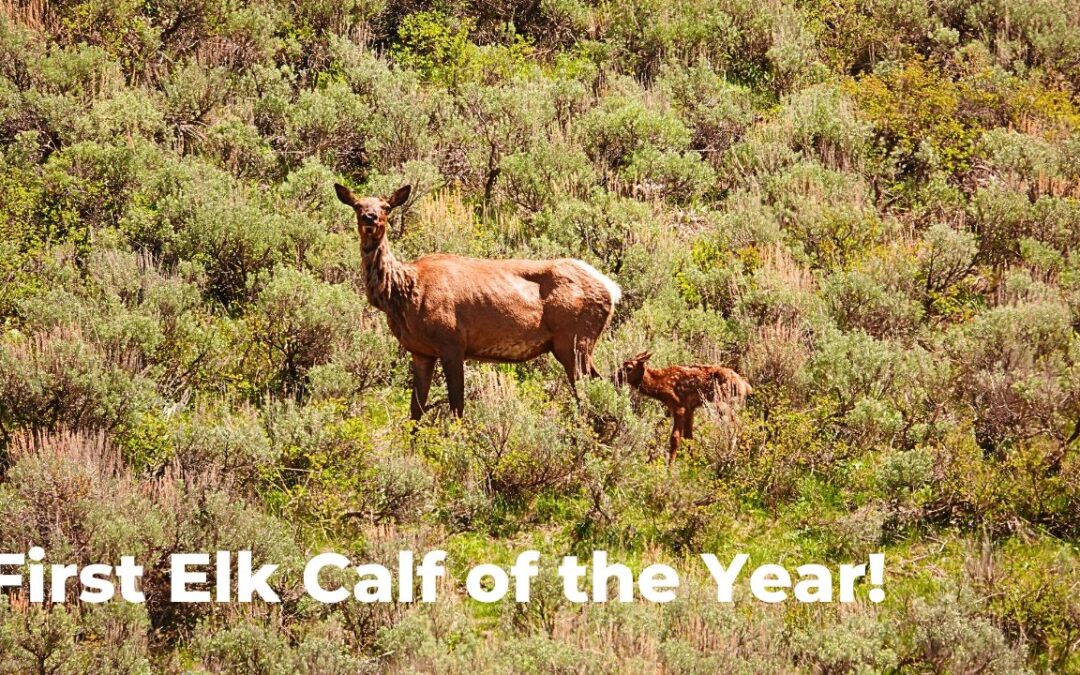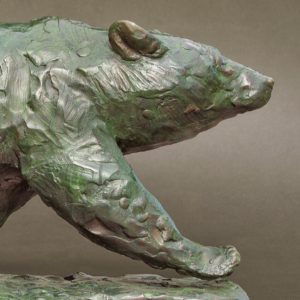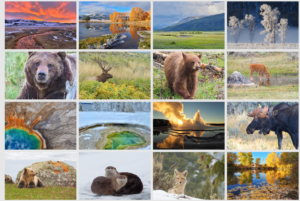On a recent off-trail meander on Yellowstone’s northern range, Jenny and I found ourselves rerouting around a hill to avoid a group of bison. The terrain forced us to loop wide, and as we came around the far side of the hill, something unexpected happened—we crossed paths with a small group of cow elk just coming around the same hill, about 120 yards away. One of them, the lead cow, had a brand-new calf barely able to walk.
The moment we saw them, we dropped to the ground—right into the sagebrush and grass—trying to lower our profile and avoid disturbing them as much as possible. The elk still saw us, of course. The adult cows were alert and watchful, aware of our presence and not entirely comfortable.
They were headed in the same direction we had planned to go, so we paused, giving them time and space to move along on their own terms before continuing on.
But what a sight! That was our first elk calf of the year. A sweet, wobbly little thing.
It’s always astonishing to see a calf that young out in the open. This one had clearly just been born—not long ago at all. Its spindly hind legs looked too long for its body, like it wasn’t quite in control of them yet. The calf was trying to keep up with its mother and the other adult females, struggling in the heat of the sun.
Typically, calves this age are stashed somewhere—hidden in tall grass or underbrush—while their mothers go off to feed, returning only to nurse. It made us wonder: why was this one up and moving so soon?
We started piecing together what might have happened.
Just before we encountered the elk, we noticed a bull bison moving in the direction the elk had come from. It’s possible that disturbance triggered the elk group to move, but seemed unlikely. Just a while earlier, we had also heard a group of coyotes howling off to the northeast—and then another coyote called back from just ahead of us. Eventually, we spotted the coyote pack that had kicked off the chorus howl; they were moving north and west—exactly the direction the elk were heading.
It’s all speculation, of course, but maybe the mother elk felt it wasn’t safe to leave her calf behind with coyotes nearby. So she brought it with her, despite how difficult it must have been for the little one.
Regardless of the reason, it was a powerful moment to witness. We usually don’t see elk calves up and moving with the herd until late June or July. To see one this early—and so close—felt like a gift.
Video © Jenny Golding



